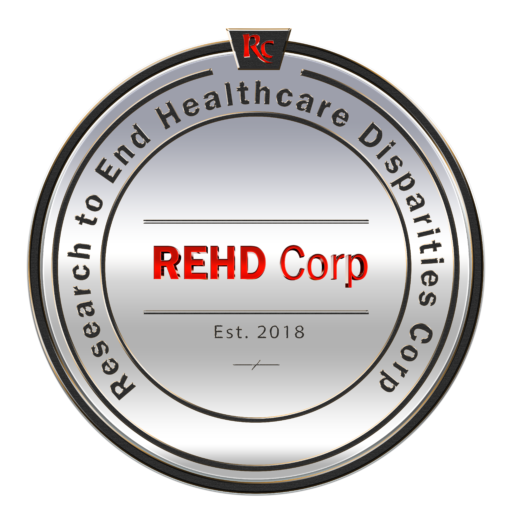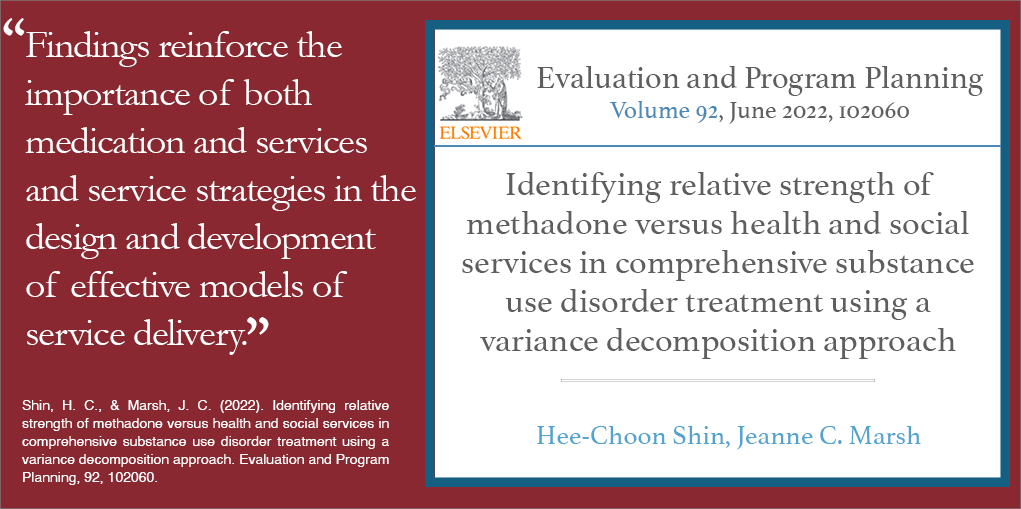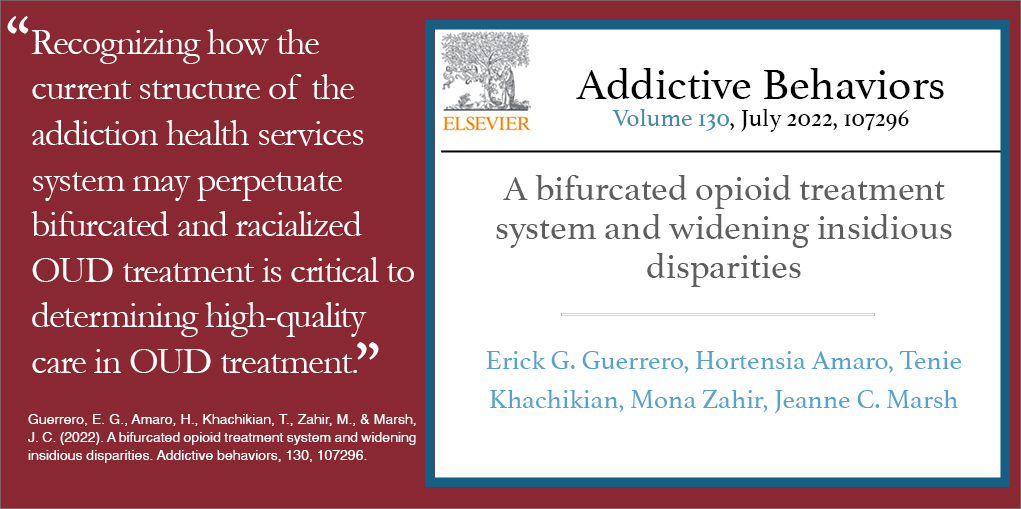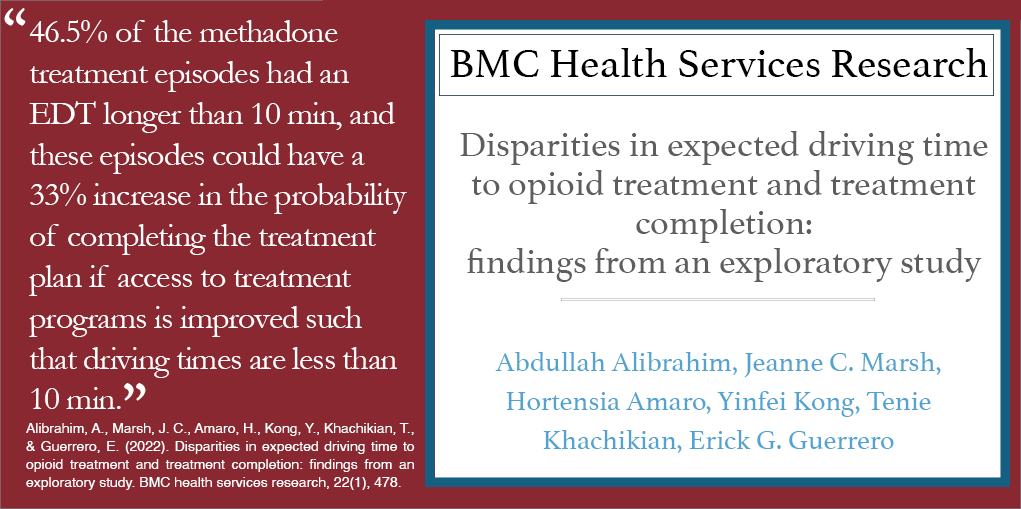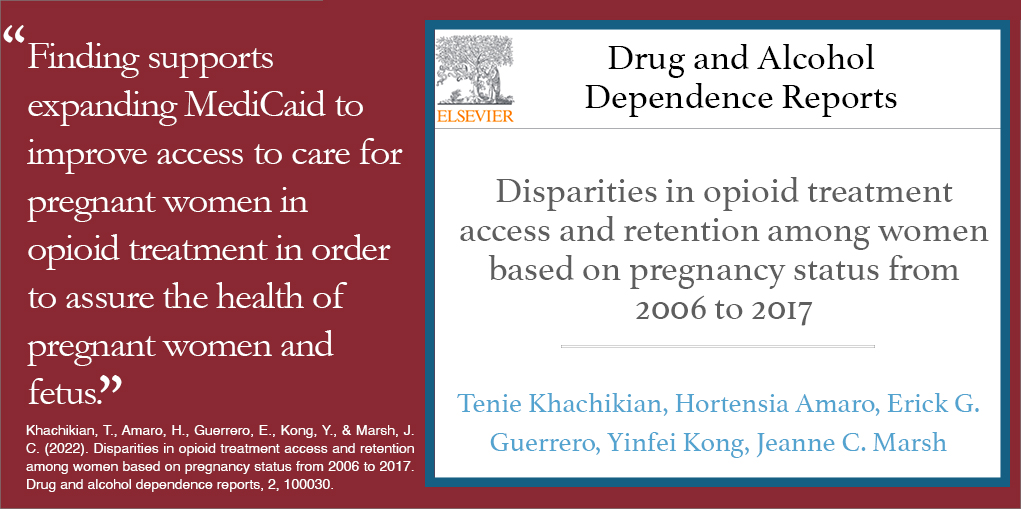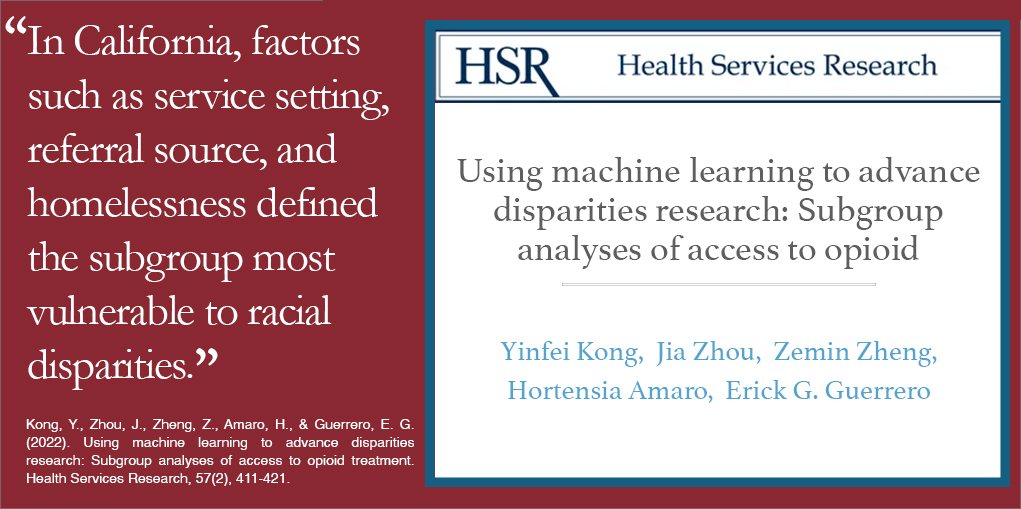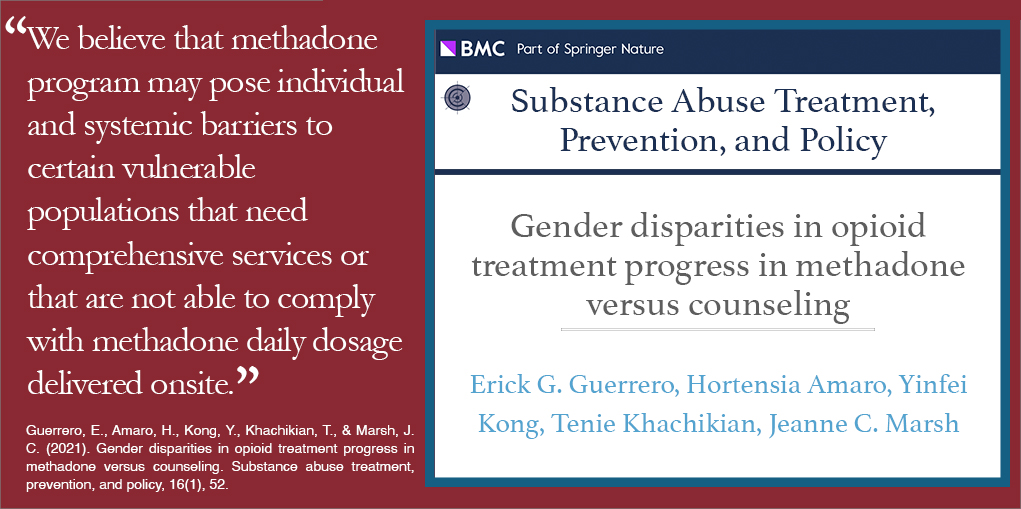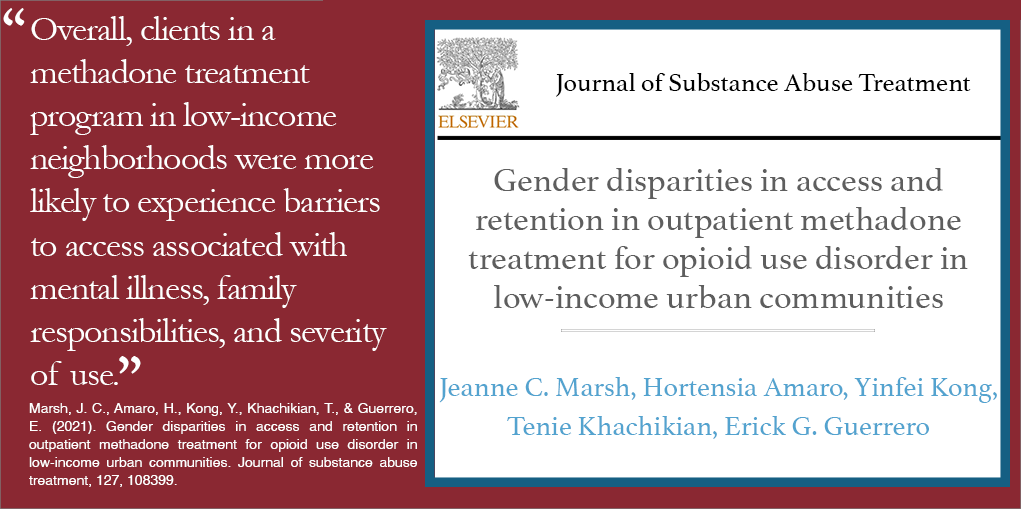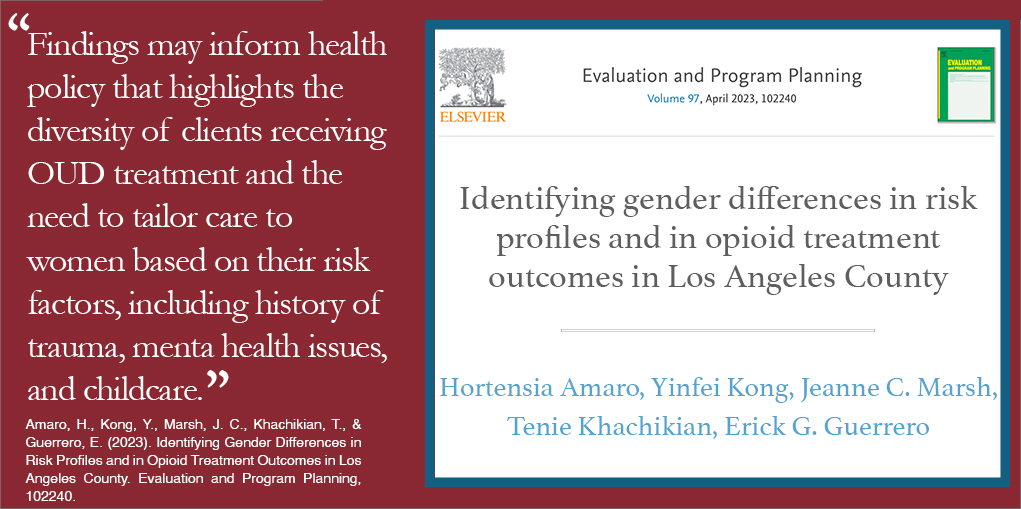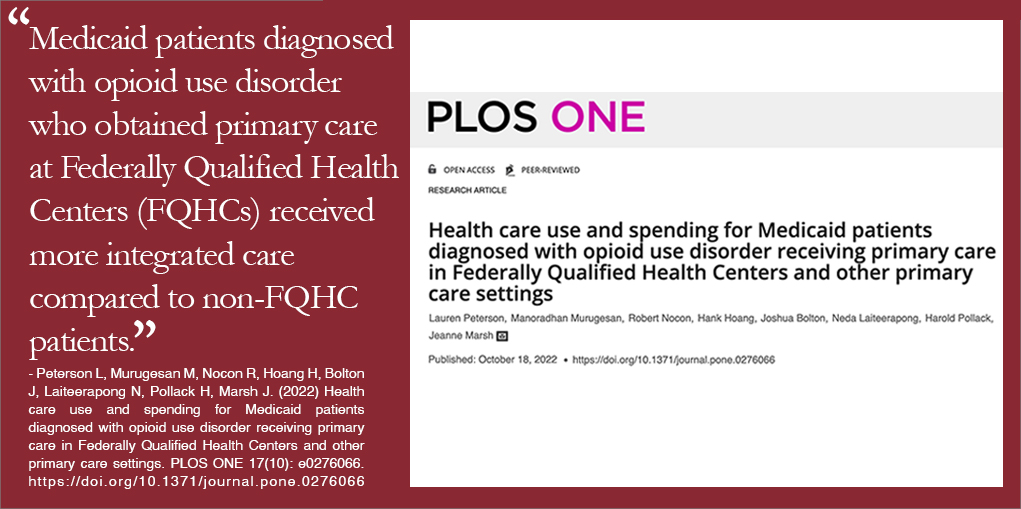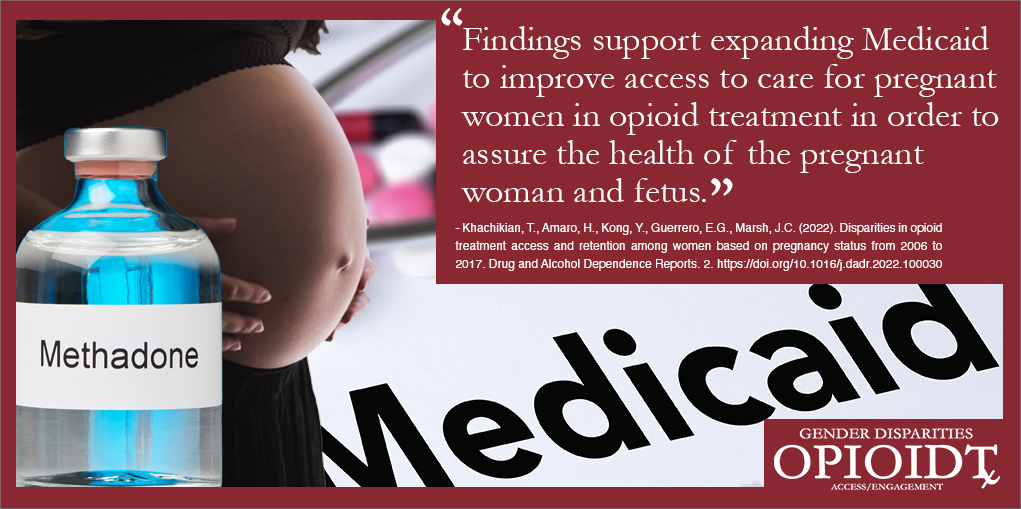Improving Underserved Group Engagement in Addiction Health Services
Improving client treatment engagement and developing high-capacity addiction health services (AHS) programs that accept public health insurance (i.e. Medicaid) and facilitate coordinated care services (i.e. mental health and HIV testing services) often becomes a daunting challenge for health providers, but studies show these elements are particularly important for low-income, underserved racial/ethnic groups and are instrumental in reducing client treatment program wait periods and producing higher overall program retention. Armed with this information, University of Southern California Associate Professor Dr. Erick Guerrero, Dr. Yinfei Kong and a team of researchers sought to determine “whether receiving care from a high-capacity program that has strong leadership, readiness to adopt new practices, and acceptance of public insurance eliminates differences among racial and ethnic groups in key measures of treatment engagement.”
Previous studies suggest that high-capacity AHS programs or “those with high directorial leadership capacity, organizational readiness for change (ORC), and capacity to bill Medicaid” aid in decreasing client wait times to begin treatment and improving client retention in those programs (a strong predictor of decreased posttreatment substance use). This point is relevant because wait time is the most common hurdle for those struggling with substance abuse issues, and African-American and Latino clients often experience much longer wait times compared to their White counterparts. This disparity is believed to partially exist because racial/ethnic minorities “are more likely to access low-capacity programs that are not able to meet their service needs.” On the other hand, high-capacity AHS programs provide quality resources to facilitate better connections with clients’ respective communities and are typically more responsive to the needs of the minority groups they assist.
Leadership is essential to improving performance, fostering change and developing resources for AHS programs, and strong leadership further assists in the delivery of integrated services and the execution of evidence-based practices — both of which decrease wait time. ORC refers to “effective implementation of new practices and innovations,” therefore, programs with increased ORC levels report greater treatment satisfaction, participation and rapport. AHS programs that accept Medicaid are critical because they provide access for low-income persons, support more services and fulfill the expectations of funders.
HIV testing and mental health services are two of the most commonly needed client services in publicly funded AHS programs. Studies have shown that high-capacity programs are often associated with the provision of such services that assist in improved wait time and client retention. Bearing this in mind, the incentives the Mental Health Parity and Addiction Equity Act and the Affordable Care Act provide to health insurance plans that offer these services at an equal level as benefits could be instrumental in enhancing the implementation of coordinated care for clients in AHS treatment programs.
In this study published by Substance Abuse Treatment, Prevention, and Policy, an analytic sample of 108 AHS programs and 13,478 client treatment episodes was used for a client dataset and program collected in 2010 and 2011 from the Los Angeles County Participant Reporting System. The programs were located in “communities with a population of 40% or more African American or Latino residents or both in Los Angeles County.” Retention and wait time served as dependent variables.
The study’s findings are as follows:
- Latino and African-American clients entering high-capacity programs had significantly shorter wait times compared to Whites.
- Latino clients were not associated with greater retention in treatment at a statistically significant level when in high-capacity programs.
- African-American clients had significantly greater retention in treatment than White clients when in high-capacity programs.
- African-American clients in high-capacity programs experienced longer treatment retention than Whites and clients entering low-capacity programs. This finding suggests that high-capacity programs are better able to engage African-Americans, potentially providing care with more direct alignment with their needs.
- Medi-Cal acceptance and ORC (two components of program capacity) were negatively associated with wait time; only ORC was associated with higher retention.
- Public funding, community referrals and methadone (i.e. control variables) were negatively associated with wait time.
- Control variables like drug court referral, Medi-Cal eligibility and homelessness were positively associated with retention.
- The provision of HIV testing services and coordination with mental health providers enable high-capacity programs to reduce client wait times. This finding suggests that the resources (i.e. leadership, workforce training, infrastructure and funding) provided to high-capacity programs combined with a network of connections to other providers offering essential services, may help clients start treatment faster.
